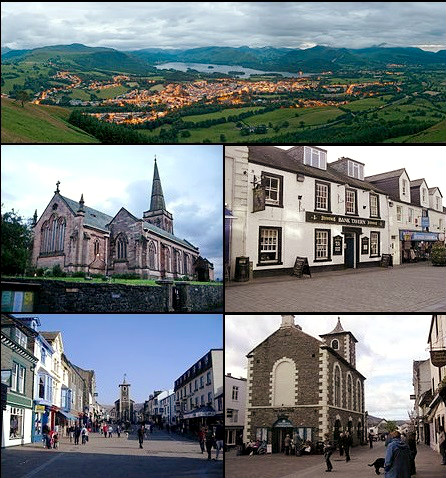Keswick, Cumbria
 Keswick, Cumbria.
Keswick, Cumbria.Keswick, Cumbria, is an English market town and civil parish, historically in Cumberland, and since 1974 in the Borough of Allerdale. The town, in the Lake District National Park, just north of Derwentwater, and 4 miles (6.4 km) from Bassenthwaite, had a population of 4,821 at the time of the 2011 census. There is considerable evidence of prehistoric occupation of the Keswick area. The first recorded mention of the town dates from the 13th century, when Edward I granted a charter for Keswick's market, which has maintained a continuous 700-year existence. In Tudor times the town was an important mining area, and from the 18th century onwards it has increasingly been known as a holiday centre; tourism has been its principal industry for more than 150 years. Two of the Lake Poets, Samuel Taylor Coleridge and Robert Southey, lived in Keswick in the early 19th century and made the scenic beauty of the area widely known to readers in Britain and beyond.







